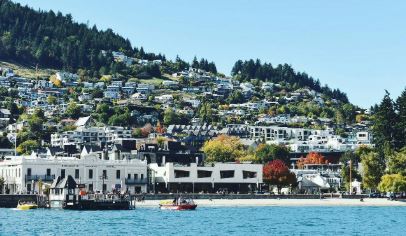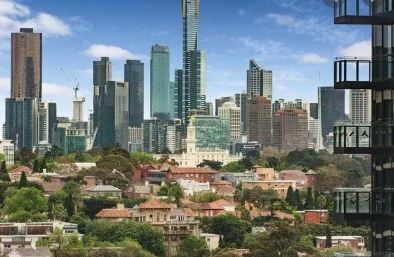
In many countries, including New Zealand and Australia, foreigners’ ownership of property is receiving increasing attention. A recently released report found that Chinese investment in residential real estate is slowing down. As the gap in rental yields between the two countries has narrowed and house prices have risen, the attractiveness of Australian residential real estate has increased compared to before. This is because the restrictions on the ownership of Chinese urban residential property and the removal of currency restrictions on personal investment have played a role. From 2018, New Zealand will ban foreigners from owning residential properties to curb housing inflation and high vacancy rates.

New Zealand situation

Last year, the inflation rate of residential properties in New Zealand reached 10.46%. In the past three years, prices have increased by 34%. As a result, New Zealanders are increasingly worried that low- and middle-income groups will be excluded from the real estate market. New Zealand’s home ownership has reached its lowest level in 65 years. Only a quarter of adults under the age of 40 own their own homes, compared with only half in 1991.
In the last fiscal year, immigration to New Zealand increased by 19%. Strong immigration, low interest rates and limited housing supply, especially in areas affected by the recent earthquake, have exacerbated housing price increases.
Jancinda Ardern’s new Labor government participated in the elections with a comprehensive housing platform, which included combating speculators. The Labor Party stated that the 2015 tax changes applied to investor income did not have the desired effect of limiting price increases.

How does Australia compare?

In terms of housing, New Zealand is ahead of Australia in other areas of housing policy. The upcoming legislative changes in New Zealand focus on prohibiting foreigners from owning residential properties. The Australian Foreign Investment Review Board (FIRB) has imposed a foreign ownership ban on existing (but not new) housing. Like Australia, New Zealand’s legislation will continue to allow permanent residents to purchase existing homes.
However, there are some significant differences. New Zealand’s laws will also apply to foreign trusts and foreign companies. Australia still allows some foreign trusts and companies to purchase existing houses that require placement of employees. In Australia, overseas residential investment is mainly used to build new houses.
Many Australians believe that students and temporary residents who work here (such as students) should not be allowed to purchase existing residential properties. FIRB allows this. The current proposed New Zealand law does not. New Zealand predicts that eliminating investor demand by excluding foreigners from the market will help stabilize housing prices. However, there is little evidence that such measures have successfully slowed Australia’s price inflation.
The increase in stamp duty on certain foreign residential purchases runs counter to FIRB’s long-term demand for encouraging investment to offset foreign trade deficits. For example, in 2015/16, foreign real estate investment approvals totaled A$72.4 billion. However, both the New South Wales and Victorian governments have increased the stamp duty surcharges imposed on residential real estate by foreign investors to make them less attractive. The difference between the two countries is that in Australia, the surcharge is levied as a state initiative rather than a federal initiative.
Not all states impose surcharges on foreign real estate investments. Therefore, this impact is unlikely to disgust Australia’s main trading partners and investors like China. The New Zealand surcharge will apply nationwide. Therefore, the surcharge can be regarded as a protectionist measure.

Why Australia looks attractive

In 2015, Chinese investors invested approximately A$6.8 billion in Australian commercial and residential real estate. The current Foreign Investment Review Board (FIRB) policy transfers real estate investment funds to new homes, thereby creating more jobs in the construction industry and supporting economic growth.
Although temporary Australian residents may be required to sell older residential properties after they leave Australia, many foreign citizens can still keep, rent, sell or live in newly built houses. This is the main attraction of China’s investment in new residential buildings.
Other driving factors include: Compared with China, Australia’s financial institutions are stable, the land ownership system is regulated, the real estate market is active, the capital return rate in major cities is high, and deposit requirements are low. Australia’s Foreign Investment Review Board (FIRB) may pay attention to these factors when considering new foreign investment in the real estate market, but it is difficult to offset the impetus of Chinese property law restrictions and investor demand. Foreign home ownership – how Australia and New Zealand compare
In many countries, including New Zealand and Australia, foreigners’ ownership of property is receiving increasing attention. A recently released report found that Chinese investment in residential real estate is slowing down. As the gap in rental yields between the two countries has narrowed and house prices have risen, the attractiveness of Australian residential real estate has increased compared to before. This is because the restrictions on the ownership of Chinese urban residential property and the removal of currency restrictions on personal investment have played a role. From 2018, New Zealand will ban foreigners from owning residential properties to curb housing inflation and high vacancy rates.

